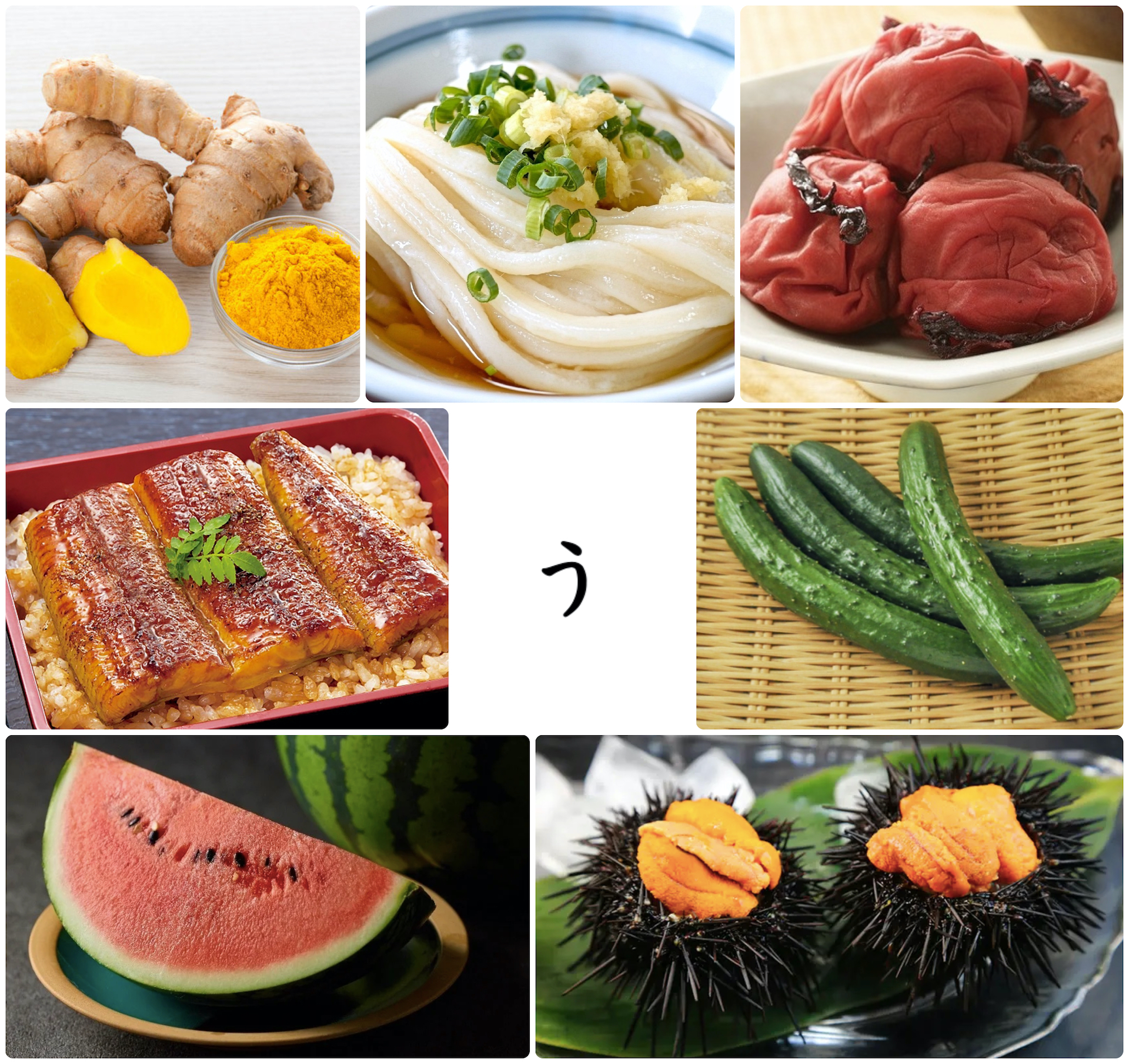
The Japanese have long believed that foods beginning with the syllable “U” (written” う in hiragana), have special beat-the-heat properties. Most famous is UNAGI (eel, rich in vitamin B1) known as an antidote for summertime lethargy. The current custom of eating soy-glazed eel (unagi no kabayaki), specifically on Doyō Ushi no Hi (Midsummer Day of the Ox), can be traced back to the late 18th century.
But eel is not the only “U” food known as a remedy for heat exhaustion.
There is UNI (sea urchin) packed with the amino acid taurine known for its potent fatigue-relieving effect and UKON (turmeric), revered in Ayurveda practice as a cooling agent; it is used in many summertime dishes.
Fruits and vegetables in the URI family (Cucurbitaceae or cucurbits) include cucumbers (kyuuri) and watermelons (suika). These quench thirst and restore mineral balance (especially potassium and magnesium) depleted by sweating.
Mouth-puckering UMÉBOSHI have long been touted as a way of ensuring food safety on hot days because of their anti-bacterial properties.
Thick, chewy UDON noodles provide the energy you need to function (your body turns noodle carbs into ready-for-action glucose).
Visit PROJECT Eat to Beat the Heat for suggestions and recipes to help you cope with summertime lethargy.
And, if you haven’t yet read my August 2024 newsletter about Eat to Beat the Heat, check it out.




